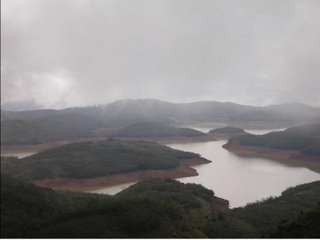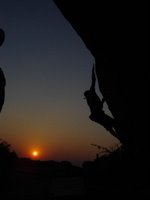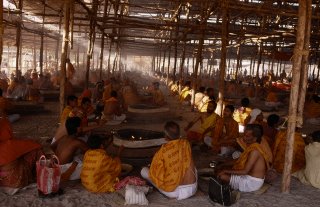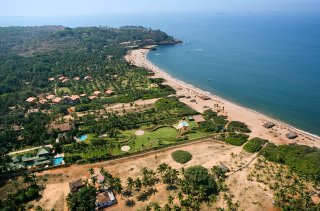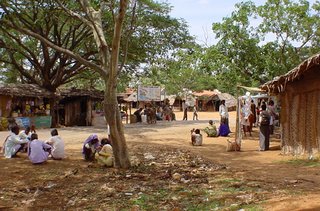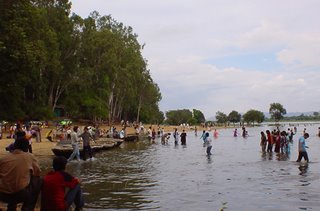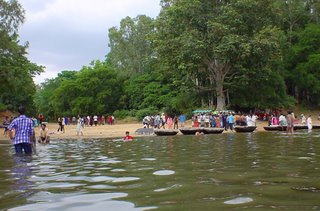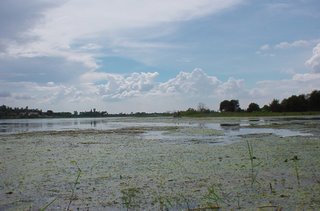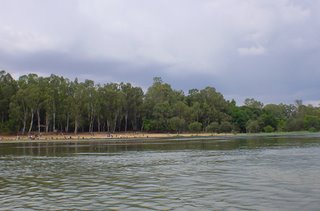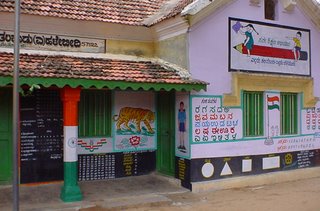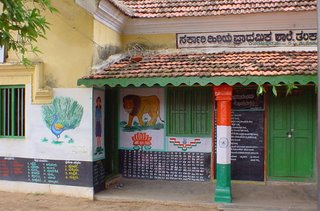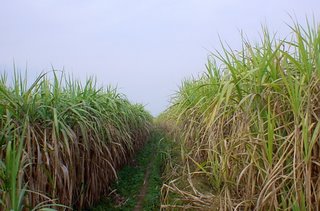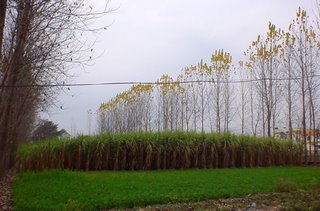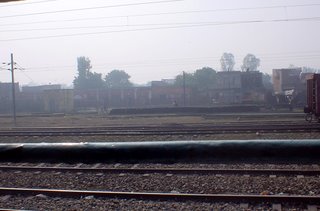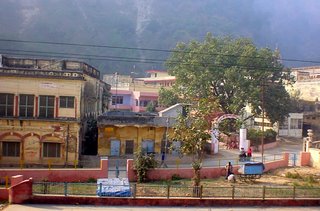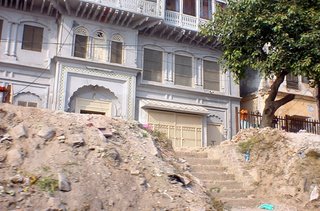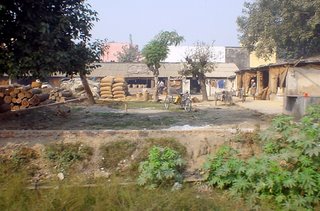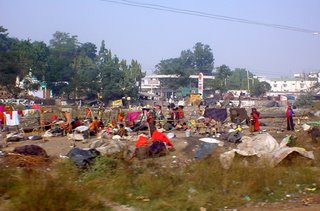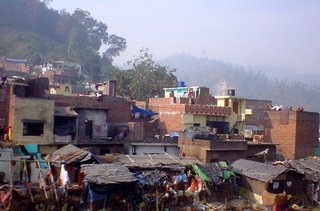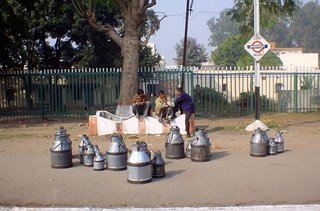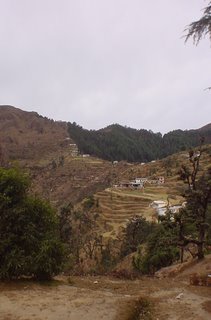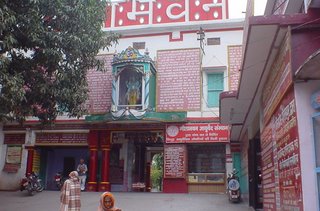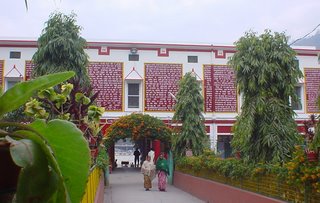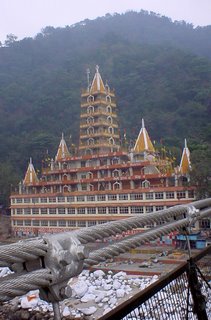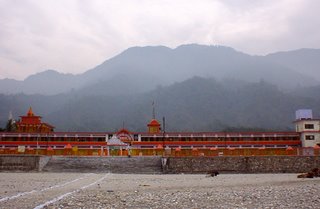Western Catchment
The western catchment in the Upper Bhavani forms the western edge of the Nilgiris. Here, the hills crash down suddenly to the forests of New Amarambalam thousands of feet below. With the sheer cliffs all around, it is as if one were standing in a giant amphitheatre. Behind you is an undulating landscape , hill after hill covered by a seemingly endless sea of grass. Here and there, the monotony of the grassland is interrupted by small patches of forest with canopies of brown, red and green. In the valley, the startling blue fingers of the Upper Bhavani reservoir stretch across the landscape.
From December to April, the grasslands are brown, or blackened by fire, and the green of the shola is in striking contrast. Early mornings, the grasslands turn white, covered with frost. As the sun comes up, ghost wreaths of mist rise slowly from the ground, covering the landscape with a blanket of fog. Almost overnight, as the rains come and slake the thirst of the grasses, the hill slopes turn a bright green. The sholas are rain-soaked; sponge-like, they absorb the water and hold it in their innumerable pouches and folds- the soil, the dead barks of trees, living trees- and their perennial streams and countless other mini reservoirs. The sun goes into hiding for several months, clouds roll through periodically , half hiding the forests in the valleys.
I describe Upper Bhavani in the Nilgiris, but the landscape represents a wider genre, namely the montane ecosystem of the Western Ghats. The montane ecosystems throughout the Western Ghats form extraordinarily beautiful landscapes. The mosaic of sholas and grasslands is pretty in a way that defies description. Grasslands form the matrix in this panorama, while the sholas are invariably found nestling in the valleys. The `sholas' are montane evergreen forests, where the species are similar to those in lowland evergreen forests, but more stunted. There is an incredible diversity of plant and animal life in the Western Ghats, and the montane systems are no exception.
They have extremely dense undergrowth and the ground is covered with leaf litter. Most of the sholas are on slopes, sometimes very steep, and perennial streams cut deep valleys through them. When it rains (which is most of the time) , walking through can be about as safe as crossing a city road at rush hour. There has been much debate for the better part of the century about the origin of the grasslands in the montane systems of the Western Ghats. One school of thought believed that the grasslands were a part of the climax vegetation of the system. The other proposed that they had been induced by the advent of man in these areas. Man-induced fires, and grazing by livestock and cattle would have created these grasslands and frost could have prevented the forests from re-expanding. However, recent work has shown that grasslands existed as long as 40,000 years ago in the Nilgiris, long before the advent of man in the region. The Forest Department has had to review its policy of treating the grassland as a poor relative of the shola, their plantations having largely affected the grasslands.
Upper Bhavani, about 60 kilometres from Ooty, is one of the entry points to the Mukurthi National Park. This is a small sanctuary of some 70 square kilometres where the last surviving tahr of the Nilgiris (an animal ironically called the `Nilgiri Tahr') remain. The sanctuary is like a misshapen dumb bell; there is a large chunk to the south and a large chunk to the north (an area including the Nilgiri and Mukurthi peaks), connected by a long strip along the ridge where the western catchment dams are located. The southern chunk is bounded by the Upper Bhavani reservoir to the east and the ridge of the Nilgiris to the east and south. To the southwest is the Sispara pass, which leads straight down into Silent Valley National Park. The sanctuary contains the few shola-grassland areas in the Nilgiris which have remained relatively untouched. Over the rest of the Nilgiris, most of the habitat has been wiped out by plan- tations. Even after the sholas were recognised as worthy of conservation, grasslands were considered to be wastelands and planted on even by the Forest Department itself. The Forest Department continues to plant wattle in the grasslands, since it is a fast growing tree and bears yield quickly. Wattle has been useful to the extent that it has fulfilled the fuelwood needs of the locals and therefore helped in preserving the sholas.
The weather in Upper Bhavani remains wet much of the year. The western catchments get as much as 5000 mm of rainfall. Much of the rain comes from the South West monsoon, lasting from June to September, but mostly in July. During this period the sun may disappear for weeks at a time. The North East monsoon is not very significant in this area, but has greater impact in the Coonoor region of the Nilgiris. In the Upper Bhavani region , the dry season lasts form January to April. The temperatures vary from 0 to 30 degrees celsius in the grasslands during the dry season, but remain constant around 15 degrees celsius in the sholas.
A few miles from Upper Bhavani is the largest shola in the Nilgiris, Thai Shola. `Thai shola' may be translated as `mother shola' which provides an interesting ecological perspective, in that Thai shola may well be a species source for the other smaller sholas in the area. However, the name probably derives originally from `Thia shola' which means `shola that does not catch fire'. The Western Ghats are, as is well known, considered a biodiversity hotspot of the world. There are 117 species of amphibians here, of which 89 are endemic. All the shieldtails, a group of 44 species of burrowing snakes, are endemic to the Western Ghats and Sri Lanka. Several endangered mammals- the Lion tailed Macaque, the Nilgiri tahr, the Nilgiri marten and the Nilgiri langur- are also found only in the Western Ghats. The tree species in the sholas are evergreen, many of them belong to the family Lauraceae.
Some of the common trees include Litsaea spp., Cinnamomum spp., Syzygium spp. . Rhodomyrtes and Rhodendron are found along the edges of the sholas. Psychotria and Strobilanthes are common woody shrubs. Of course, Strobilanthes kunthianus, (the `kurinji') which covers many hill slopes with its bright blue flowers once in 12 years, gives the Nilgiris its name. There are several species of Strobilanthes in the Nilgiris and many of them flower only at long intervals.
There are many animals that are unique to the montane systems of the Western Ghats. Amongst these are the uropeltids or shieldtails, a group of burrowing snakes found exclusively in the Western Ghats and Sri Lanka. These are very elusive creatures and only come out during the rainy season to breed, and that too at night. Otherwise they stay in the network of burrows one to two metres below the soil feeding primarily on earthworms. They are small snakes (one to two feet in length) with a blunt head and a spiny tail, which they use to burrow. They are very colorful and come mostly in reds, oranges, and purples with yellow blotches on the sides and below. The other snakes that are characteristic of the higher altitudes are the pit vipers. Of these, the Malabar Rock Pit Viper and the Horse-shoe Pit Viper are fairly common. Pit vipers have a heat sensory pit on their head, which they use to track their warm blooded prey. These are less poisonous than the Saw-scaled and the Russel's vipers. Kukris (Oligodon spp.) and grass snakes (Ahaetulla perroteti) are common snakes. A frequently seen reptile is the Nilgiri Salea, an agamid whose colour varies from bright green to brown. Several species of frogs are found at these altitudes despite the temperatures. Most of the frogs are found in the sholas. However, the toads, especially the common toad, Bufo melanostictos, is often found on the grassland. The frogs here are largely tree frogs, belonging to genera, Philautus and Rhacophorus. The Green tree frog, Rhacophorus malabaricus, is also found here. Tree frogs are generally active during the rains, and in winter, they hibernate, usually under tree barks and in dead logs.
Upper Bhavani has most of the large mammals that a sanctuary might want to boast of. However, some of these are visitors while others are found in low densities. There are tigers, leopards and wild dogs resident in the park. While the former are rarely seen, the 2 to 3 wild dog packs resident in the area are more easily sighted. Smaller carnivores include the jungle cat, the leopard cat, the small Indian civet, the palm civet, and quite possibly the Nilgiri marten. Otters amy be seen in some of the streams. Jackals are very common and quite handsome in these areas. The odd bear may ramble into the area, but excepting the fruiting season when Syzygium, Rhodomyrtes, and other fruits might attract them, there is little food in the area. Primates include the Nilgiri langur, whose resounding vocalizations are a hallmark of the sholas. Bonnet macaques are also seen, but mostly in plantations, and at the edges of sholas.
The most common herbivore is the sambar, the animals seen in this area being clearly bigger than in Mudumalai. Barking deer and mouse deer are also found in these forests. There was no record of gaur for the past 20 years despite the fact that there is a place called Bison swamp very close to Upper Bhavani. However, recently, gaur were sighted once in the Upper Bhavani area. Elephants wander over the upper plateau, but they are believed to migrate down the slopes to Silent Valley or the Attapadi plateau. There is probably one resident herd which uses the upper plateau. The Nilgiri tahr, in whose honor the national park was created, is fast becoming another rarity in the park. The reasons for the decline are not clear, but habitat loss and poaching are clearly important factors. Various censuses over the past few years indicate that the numbers have dropped from 400 in 19**** to about 100 in 1994. The tahr are primarily creatures of the grass- lands, living on steep slopes and near cliffs. They are grazers, feeding almost exclusively on grasses. The grasslands have suffered greatly in these areas and have given way to plantations of tea and even wattle. To add to their woes, poaching has further depleted their numbers. Tahr live in herds of 10 to 15 animals, but may congregate to form larger herds of upto 100 or 200 animals. Herds of this size are almost unheard of in the Nilgiris today.
Among the birds of the sholas are flycatchers- the Black and Orange flycatcher, the Nilgiri flycatcher, and the Grey Headed flycatcher. Black bulbuls, Nilgiri laughing thrushes, and White Eyes can also be frequently sighted. On the grassland, the Nilgiri pipit is the most common bird. Black winged kites and kestrels are main predators of the grassland.
My work in the Nilgiris was primarily on very small mammals, mainly rodents and insectivores. We looked at some aspects of diversity and community ecology in this group. The dominant rodent species in the shola was, interestingly, the wild subspecies of the Common House Rat (Rattus rattus wroughtoni). Unlike its urban counterpart, this is actually quite a pretty animal, with rufous brown fur, and a totally whiteunderside. Other species included the soft furred field rat (Millardia metada), some species of mice, the Long Tailed Tree mouse (Vandeleuria oleracea)- another very attractive animal- and the Spiny Tailed dormouse (Platycanthomys lasiurus). The Dusky Striped squirrel is a rare arboreal rodent, while the Malabar Giant squirrel is both frequently heard and seen. The logic behind the study of rats may not seem very obvious, but on a little reflection, one finds that they are a key food resource for several groups of animals.
They are a staple diet for raptors, owl, snakes, and several small carnivores. Many of these are key components of the ecosystem and if we are to conserve them effectively, we need to understand all the factors that affect their survival. In fact, there has been some research on estimating carnivore densities from rodent densities. Further, there are several interesting theoretical questions in the field of community ecology and diversity that rodents could provide insights into.
A prevailing preoccupation in conservation today is the design of nature reserves since forests everywhere are getting fragmented. The theory of island biogeography (relating to the number of species on islands) has now been extended to terrestrial islands or forest fragments. The sholas in the Western Ghats provide a naturally fragmented system in which these facets of ecology can be studied.
The animals in the area are under threat due to loss of habitat and poaching. Many animals- jackals, jungle cats, giant squirrels, nilgiri langurs- are killed for their skins. Leaving aside all questions of science, the shola - grassland system is a unique ecosystem and one of the prettiest landscapes in the world. The ecosystem and all its faunal inhabitants are an irreplaceable part of the tremendous natural heritage of this country. And it is upto us to do our very best to see that they do not disappear into our memories
Bangalore - Ooty - Murkruthi national Park - Western Catchment
